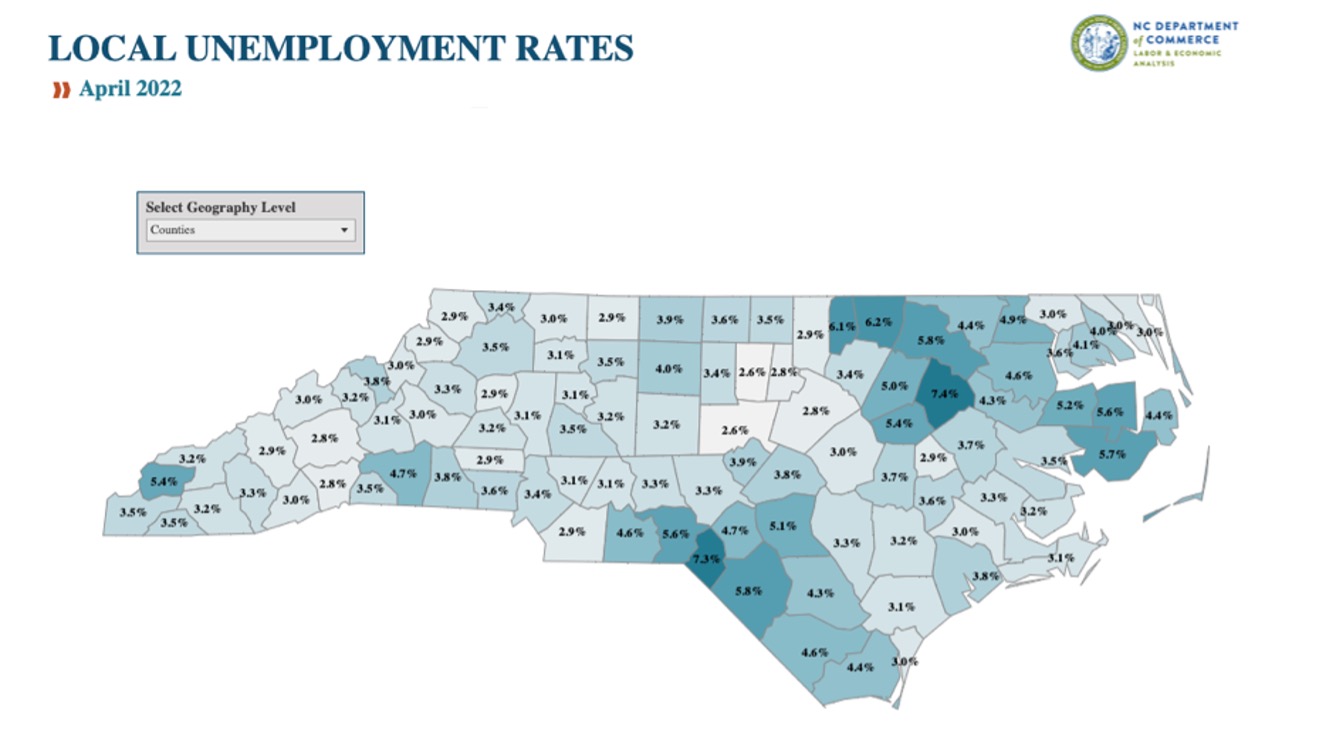Since September, the John Locke Foundation has been tracking the monthly jobs and unemployment data for North Carolina released by the Department of Commerce.
North Carolina has relatively low unemployment. The April report showed the state has 3.4% unemployment, below the national average of 3.6%.
But a closer look at County-level data reveals that within the state, unemployment varies substantially. Edgecombe County has the highest unemployment rate at 7.4% while Orange and Chatham Counties boast the lowest rate at 2.6%. The state’s higher unemployment counties are concentrated in the northeast and southeast, and away from urban centers.

Thirteen counties have unemployment rates above 5%. Over the last year, however, unemployment rates have decreased in all 100 counties as the state’s average has dropped markedly.
Even with such differences amongst local economies, the government often focuses its efforts, albeit misguided, on urban areas. Governor Roy Cooper, for example, often touts his Job Development Investment Grants (JDIG) as creating jobs. Despite the fact that a) it is not the role of government to create jobs via economic incentives and b) these incentives do not create jobs; Gov. Cooper fails to focus greater efforts on the areas that are least well-off. Instead, the majority of economic incentive deals continue to go to the most wealthy counties like Wake and Mecklenburg.
Unemployment may be just one barometer of state economic health, but it is perhaps the most important. Having steady employment can enable financial stability for households, reducing uncertainty and the multiple stresses that accompany it.
Metro areas often fare better than their rural counterparts in terms of unemployment rates. Though Cooper continued to oppose them, recent personal and corporate tax cuts benefit all North Carolinians, including those in rural areas. Doling out corporate welfare, on the other hand, mostly to affluent urban centers, weakens job creation across the entire state.


